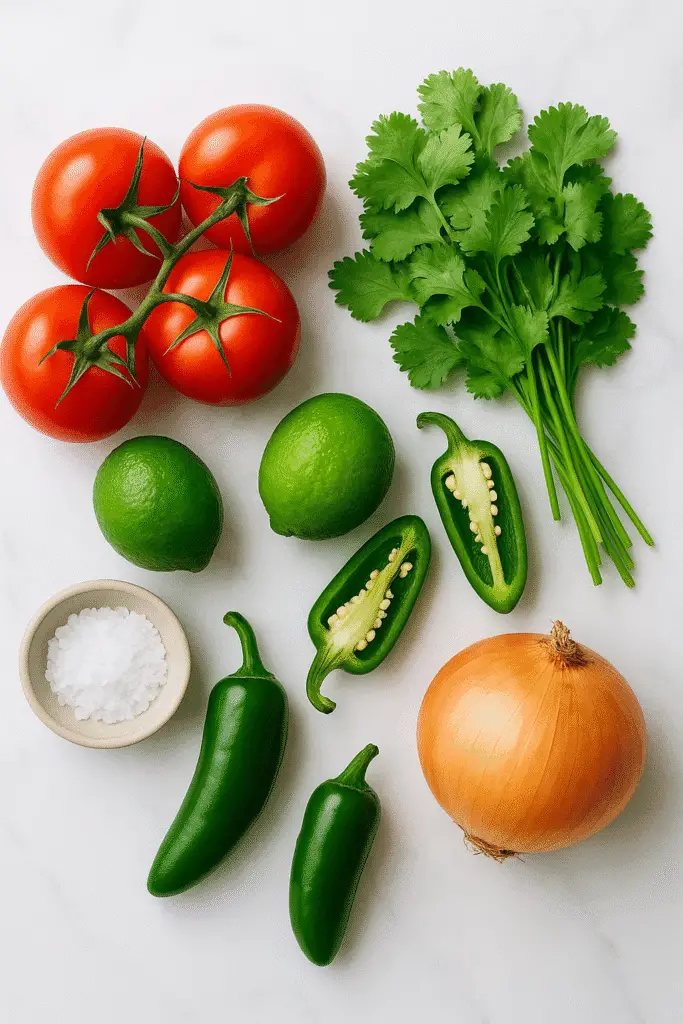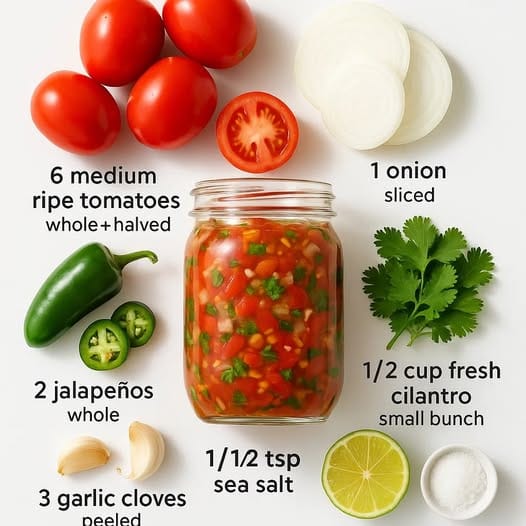Table of Contents
Table of Contents
If you’ve ever loved the zing of fresh salsa, wait until you try fermented salsa. It’s tangy, probiotic-rich, and bursting with flavors that go beyond your typical dip. Fermentation doesn’t just transform salsa into a gut-friendly superfood—it also amplifies its flavor, making it a true flavor bomb for tacos, burritos, eggs, or even just tortilla chips.
In this guide, we’ll explore what fermented salsa is, why it’s healthy, and how you can easily make it at home. By the end, you’ll be ready to whip up your own batch and enjoy the countless health perks of this tangy condiment.
What Is Fermented Salsa?
Fermented salsa is simply salsa that has been allowed to ferment using naturally occurring beneficial bacteria, instead of being eaten fresh right after chopping. This process not only adds probiotics but also gives the salsa a unique tangy flavor.
The Difference Between Fresh Salsa and Fermented Salsa
Fresh salsa (also called pico de gallo) is crisp, bright, and meant to be eaten quickly. Fermented salsa, on the other hand, develops complexity over time. The flavors meld together, becoming tangy, slightly fizzy, and deeply savory. Plus, it lasts longer without going bad.
The Science of Fermentation: How It Works
Fermentation happens when beneficial lactic acid bacteria (LAB) consume natural sugars in the vegetables and produce lactic acid. This lowers the pH, creating a tangy flavor while preserving the salsa safely. Think of it as salsa and probiotics joining forces.
Health Benefits of Fermented Salsa
Fermented salsa isn’t just delicious—it’s a nutritional powerhouse.
Rich in Probiotics for Gut Health
Fermentation creates live probiotics, which support digestion, balance gut bacteria, and may even improve mood.
Boosts Immunity Naturally
A healthy gut equals a strong immune system. The probiotics in fermented salsa work hand-in-hand with vitamins C and A from tomatoes and peppers to fight off infections.
Enhanced Nutrient Absorption
The fermentation process helps break down compounds in vegetables, making nutrients like vitamin C, lycopene, and antioxidants easier for your body to absorb.
Long Shelf Life Without Preservatives
Unlike fresh salsa that spoils within days, fermented salsa can last weeks to months in the fridge—no artificial preservatives needed.
Ingredients You’ll Need for Fermented Salsa

Making fermented salsa is simple, but ingredient quality makes all the difference.
Choosing the Best Tomatoes
Ripe, red, juicy tomatoes work best. Roma or plum tomatoes are ideal because they’re meaty and less watery.
Spice It Up: Jalapeños and Alternatives
Jalapeños give a nice kick, but you can swap them for serranos, habaneros, or even milder peppers depending on your heat tolerance.
Fresh Herbs and Seasonings
Cilantro, garlic, and onions are must-haves for authentic flavor. Fresh lime juice adds brightness and helps balance acidity.
The Role of Sea Salt in Fermentation
Salt isn’t just for flavor—it controls harmful bacteria while encouraging beneficial probiotics to thrive. The golden rule: use about 2% salt by weight of your ingredients.
Step-by-Step Fermented Salsa Recipe
Now, let’s get to the fun part—making your own batch!
Step 1 – Prepping the Vegetables
Wash and chop tomatoes, onions, garlic, jalapeños, and cilantro into small pieces.
Step 2 – Mixing and Salting
Place everything in a large bowl. Add sea salt (about 3–4 tsp) and squeeze lime juice. Mix well until veggies release some liquid.
Step 3 – Packing into Jars
Transfer the mixture into a clean glass jar. Press it down firmly so the brine covers the veggies. Leave about an inch of space at the top.
Step 4 – The Fermentation Process
Cover loosely with a lid or cloth. Leave at room temperature (65–75°F) for 2–4 days. Burp the jar daily to release gases. Taste along the way—when it’s tangy enough, it’s done!
Step 5 – Storing and Enjoying
Move your jar into the fridge, where it can last up to 2 months. The flavor will continue developing.
Tips for Perfect Fermentation

How Long to Ferment Salsa?
Typically, 2–4 days. Cooler kitchens may take longer, while warmer ones ferment faster.
Best Containers for Fermenting Salsa
Glass mason jars are ideal. Avoid metal or plastic, which can react with acids.
Avoiding Mold and Common Mistakes
- Always keep veggies submerged in liquid.
- Use clean utensils.
- Don’t overfill jars.
Flavor Variations of Fermented Salsa
Want to spice things up? Try these twists:
- Smoky Chipotle Fermented Salsa – Add smoked peppers for a deep, smoky kick.
- Mango or Pineapple Fermented Salsa – Sweet and tangy tropical vibes.
- Extra-Spicy Fermented Salsa – Mix in habaneros or ghost peppers if you dare!
Creative Ways to Use Fermented Salsa
Fermented salsa is incredibly versatile:
- With Tacos, Burritos, and Quesadillas – The ultimate topping.
- As a Dip for Chips or Veggies – Tangy, probiotic-packed snacking.
- Breakfast Upgrade – Spoon it over scrambled eggs or avocado toast.
- In Marinades, Soups, and Dressings – Adds complexity and a probiotic boost.
FAQs About Fermented Salsa
Q1. How long does fermented salsa last?
Up to 2 months in the fridge, sometimes longer if kept submerged in brine.
Q2. Can you make fermented salsa without salt?
Salt is crucial for safe fermentation. If reducing salt, consider using a starter culture.
Q3. Does fermented salsa taste sour?
Yes, but pleasantly tangy—not overly sour like vinegar.
Q4. Is fermented salsa safe to eat?
Absolutely, as long as you use clean jars and follow proper fermentation methods.
Q5. Can you use canned tomatoes for fermented salsa?
Fresh tomatoes are best. Canned ones lack the right sugars and bacteria for proper fermentation.
Q6. How do you know when fermented salsa is ready?
Taste it daily after 2 days. When it’s tangy, bubbly, and flavorful, it’s done.
Conclusion: Why Fermented Salsa Deserves a Spot in Your Kitchen
Fermented salsa isn’t just another condiment—it’s a gut-friendly, flavor-packed powerhouse. With probiotics for gut health, immunity-boosting nutrients, and a shelf life that puts fresh salsa to shame, it’s the perfect way to upgrade your meals.
So, grab some fresh tomatoes, a handful of jalapeños, and start fermenting your way to better health and bold flavors. Your tacos, chips, and taste buds will thank you! 🌶️🍅✨
📌 External Resource: Learn more about fermentation benefits







